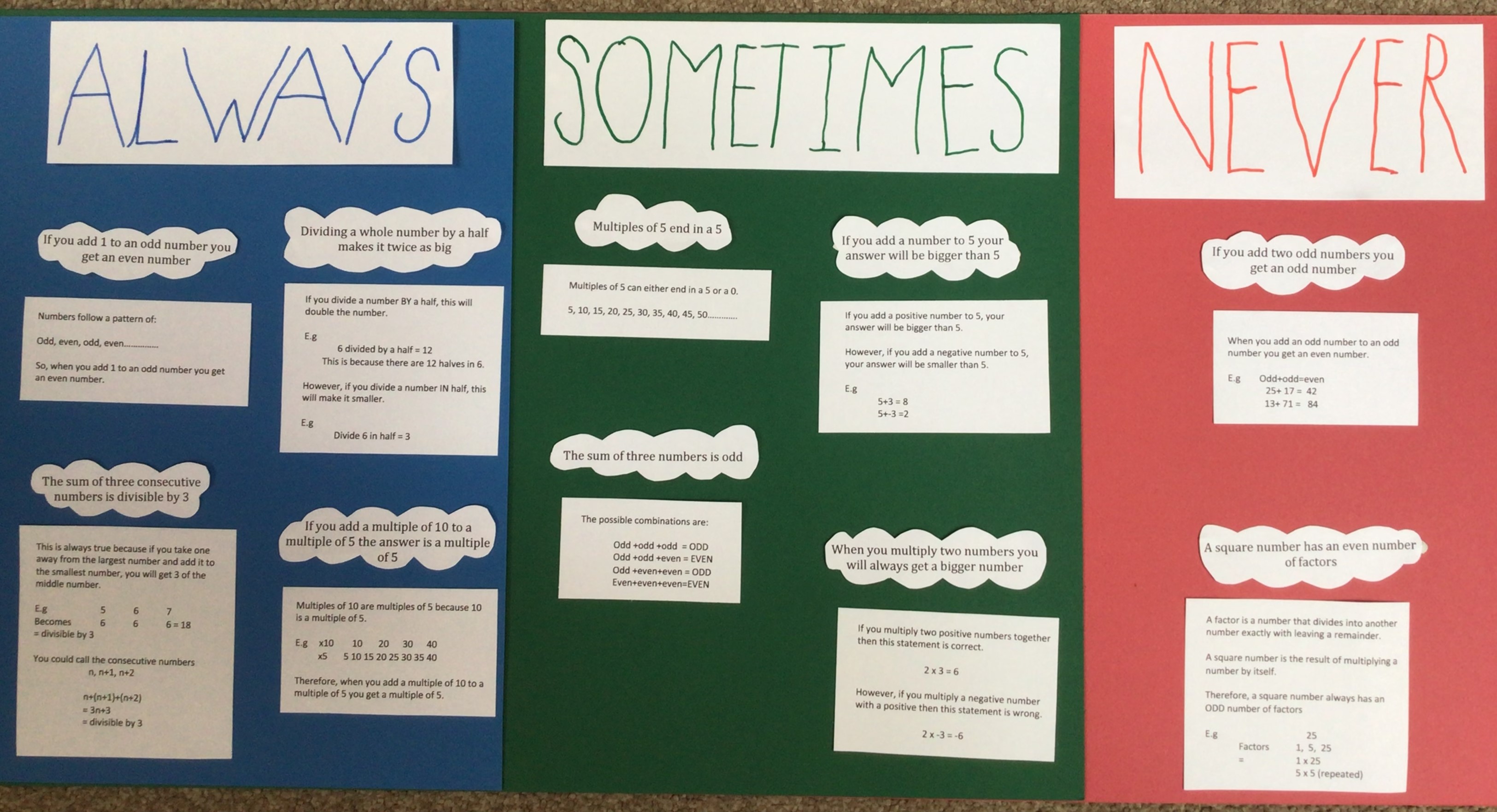Or search by topic
Number and algebra
Geometry and measure
Probability and statistics
Working mathematically
Advanced mathematics
For younger learners
Always, Sometimes or Never? Number



- Problem
- Getting Started
- Student Solutions
- Teachers' Resources
We had some excellent solutions sent in for this task. Thank you to everybody who shared their ideas.
James from Hamstel Junior School in England made a chart of his answers, explaining his reasoning under each statement. You can click on the picture below to enlarge it.
Well done, James! James has used negative numbers to show that some of these statements aren't always true.
Trisan, Rudy and Marcos from Sahauro in the USA used zero to show that some of the statements aren't always true:
If you multiply 2 numbers you can't always get a bigger answer because you can do zero times five and it will be zero.
Well done for thinking carefully about how to disprove some of these statements, even if they do always work for positive whole numbers.
Prayaan from King's College Junior School in the UK gave clear explanations for his thoughts about each statement, particularly for why a square number must have an odd number of factors:
Each factor usually has a ‘partner’ to multiply to form the original number, so there will be an even number of factors. But for square numbers, the square root doesn’t have a ‘partner’ because it multiplies itself to form a square number. So square numbers never have even number of factors.
Thank you for sending in your explanations, Prayaan. Have a look at Prayaan's full solution and see if you agree with all of his explanations. Most of the solutions we received said that dividing a whole number by a half does always make it twice as big - however, Prayaan thinks that this might not always be true:
This is true for numbers greater than 1, but for negatives, the number becomes smaller. -3 ÷ 0.5= -6
This is a really interesting way of thinking about it, Prayaan. I wonder if -6 is 'twice as big' as -3, or if we can't use that phrase because it would be below -3 on a number line. If you have any ideas about this, please email us.
You may also like
Doplication
We can arrange dots in a similar way to the 5 on a dice and they usually sit quite well into a rectangular shape. How many altogether in this 3 by 5? What happens for other sizes?
Round and Round the Circle
What happens if you join every second point on this circle? How about every third point? Try with different steps and see if you can predict what will happen.
Making Cuboids
Let's say you can only use two different lengths - 2 units and 4 units. Using just these 2 lengths as the edges how many different cuboids can you make?


